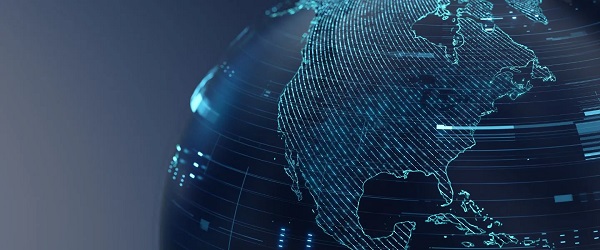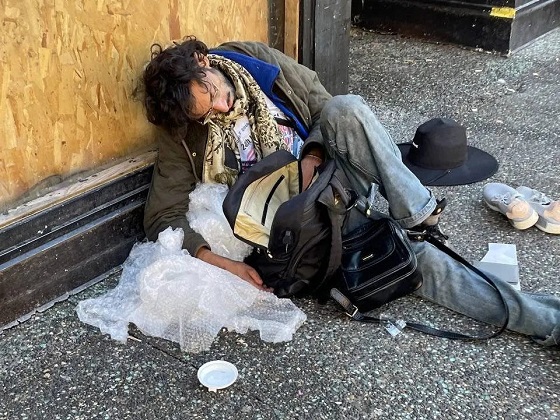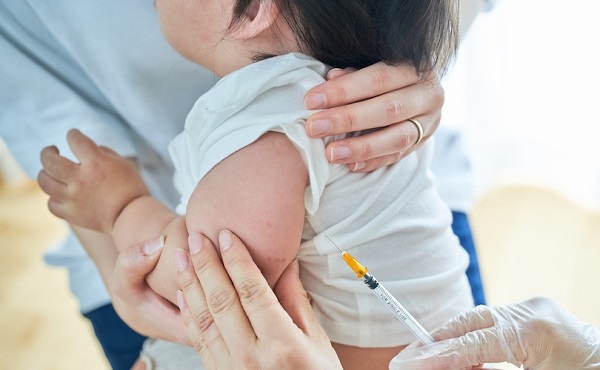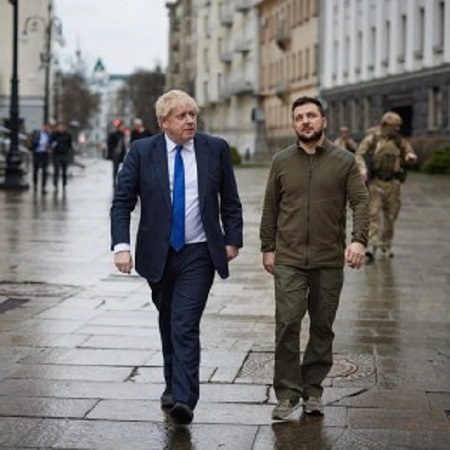Uncategorized
Gov. Northam says he wasn’t in racist photo, won’t resign

RICHMOND, Va. — Resisting widespread calls for his resignation, Virginia’s embattled governor on Saturday pledged to remain in office after disavowing a blatantly racist photograph that appeared under his name in his 1984 medical school yearbook.
In a tumultuous 24 hours, Gov. Ralph Northam on Friday apologized for appearing in a photograph that featured what appeared to be a man in blackface and a second person cloaked in Ku Klux Klan garb. In a video posted on Twitter, he said he could not “undo the harm my
But by Saturday, he reversed course and said the racist photo on his yearbook profile page did not feature him after all. The governor said he had not seen the photo before Friday, since he had not purchased the commemorative book or been involved in its preparation more than three decades ago.
“It has taken time for me to make sure that it’s not me, but I am convinced, I am convinced that I am not in that picture,” he told reporters gathered at the Executive Mansion in Richmond, calling the shot offensive and horrific.
While talking with reporters, Northam admitted that he had previously worn blackface around that time, saying he once had used shoe polish to darken his face as part of a Michael Jackson costume he fashioned for a 1984 dance contest in San Antonio, Texas, when he was in the U.S. Army. Northam said he regrets that he didn’t understand “the harmful legacy of an action like that.”
His refusal to step down could signal a potentially long and bruising fight between Northam and his former supporters, which includes virtually all of the state’s Democratic establishment.
After he spoke, both of Virginia’s U.S. senators said they called Northam to tell him that he must resign. In a joint statement Saturday night, Sens. Mark Warner and Tim Kaine and the dean of Virginia’s congressional delegation, Rep. Bobby Scott, said the recent events “have inflicted immense pain and irrevocably broken the trust Virginians must have in their leaders.”
Since Friday, groups calling for his resignation included the Virginia Democratic Party and the Virginia Legislative Black Caucus. Virginia Attorney General Mark R. Herring, a Democrat, and top Republicans in the Virginia General Assembly also urged Northam to resign, as have many declared and potential Democratic presidential candidates.
“He is no longer the best person to lead our state,” the Virginia Senate Democratic Caucus said in a statement.
If Northam does resign, Virginia Lt. Gov. Justin Fairfax would become the second African-American governor in the state’s history. In a statement, Fairfax said the state needs leaders who can unite people, but he stopped short of calling for Northam’s departure. Referring to Northam, Lt. Gov. Justin Fairfax said he “cannot condone actions from his past” that at least “suggest a comfort with Virginia’s darker history of white supremacy, racial stereotyping and intimidation.”
Northam conceded Saturday that people might have difficulty believing his shifting statements.
He was pushed repeatedly by reporters to explain why he issued an apology Friday if he wasn’t in the photograph.
“My first intention … was to reach out and apologize,” he said, adding that he recognized that people would be offended by the photo. But after studying the picture and consulting with classmates, Northam said, “I am convinced that is not my picture.”
Walt Broadnax, one of two black students who graduated from Eastern Virginia Medical School with Northam, said by phone Saturday he also didn’t buy the class’s 1984 yearbook or see it until decades after it was published.
Broadnax defended his former classmate and said he’s not a racist, adding that the school would not have tolerated someone going to a party in blackface.
The yearbook images were first published Friday afternoon by the conservative news outlet Big League Politics. An Associated Press reporter later saw the yearbook page and confirmed its authenticity at the medical school.
In an initial apology about the photograph on Friday, Northam had admitted to being in the photograph but did not say which of the two costumes he had worn.
That evening, he issued a video statement saying he was “deeply sorry” but still committed to serving the “remainder of my term.” Northam’s term is set to end in 2022.
The scars from centuries of racial oppression are still raw in a state that was once home to the capital of the Confederacy.
Virginians continue to struggle with the state’s legacy of slavery, Jim Crow and Massive Resistance, the anti-school segregation push. Heated debates about the Confederate statues are ongoing after a deadly 2017 white nationalist rally in Charlottesville. A state holiday
Northam spent years actively courting the black community in the lead-up to his 2017 gubernatorial run, building relationships that helped him win both the primary and the general election. He’s a member of a predominantly black church on Virginia’s Eastern Shore, where he grew up.
“It’s a matter of relationships and trust. That’s not something that you build overnight,” Northam told the AP during a 2017 campaign stop while describing his relationship with the black community.
Northam, a folksy pediatric neurologist who is personal friends with many lawmakers on both sides of the aisle, has recently come under fire from Republicans who have accused him of backing infanticide after he said he supported a bill loosening restrictions on late-term abortions.
In a tweet late Saturday, President Donald Trump called Northam’s actions related to the photo and abortion debate “unforgiveable!”
Last week, Florida’s secretary of state resigned after photos from a 2005 Halloween party showed him in blackface while dressed as a Hurricane Katrina victim.
____
Associated Press writer Ben Finley contributed to this report.
Alan Suderman, The Associated Press
Uncategorized
Cost of bureaucracy balloons 80 per cent in 10 years: Public Accounts

The cost of the bureaucracy increased by $6 billion last year, according to newly released numbers in Public Accounts disclosures. The Canadian Taxpayers Federation is calling on Prime Minister Mark Carney to immediately shrink the bureaucracy.
“The Public Accounts show the cost of the federal bureaucracy is out of control,” said Franco Terrazzano, CTF Federal Director. “Tinkering around the edges won’t cut it, Carney needs to take urgent action to shrink the bloated federal bureaucracy.”
The federal bureaucracy cost taxpayers $71.4 billion in 2024-25, according to the Public Accounts. The cost of the federal bureaucracy increased by $6 billion, or more than nine per cent, over the last year.
The federal bureaucracy cost taxpayers $39.6 billion in 2015-16, according to the Public Accounts. That means the cost of the federal bureaucracy increased 80 per cent over the last 10 years. The government added 99,000 extra bureaucrats between 2015-16 and 2024-25.
Half of Canadians say federal services have gotten worse since 2016, despite the massive increase in the federal bureaucracy, according to a Leger poll.
Not only has the size of the bureaucracy increased, the cost of consultants, contractors and outsourcing has increased as well. The government spent $23.1 billion on “professional and special services” last year, according to the Public Accounts. That’s an 11 per cent increase over the previous year. The government’s spending on professional and special services more than doubled since 2015-16.
“Taxpayers should not be paying way more for in-house government bureaucrats and way more for outside help,” Terrazzano said. “Mere promises to find minor savings in the federal bureaucracy won’t fix Canada’s finances.
“Taxpayers need Carney to take urgent action and significantly cut the number of bureaucrats now.”
Table: Cost of bureaucracy and professional and special services, Public Accounts
| Year | Bureaucracy | Professional and special services |
|
$71,369,677,000 |
$23,145,218,000 |
|
|
$65,326,643,000 |
$20,771,477,000 |
|
|
$56,467,851,000 |
$18,591,373,000 |
|
|
$60,676,243,000 |
$17,511,078,000 |
|
|
$52,984,272,000 |
$14,720,455,000 |
|
|
$46,349,166,000 |
$13,334,341,000 |
|
|
$46,131,628,000 |
$12,940,395,000 |
|
|
$45,262,821,000 |
$12,950,619,000 |
|
|
$38,909,594,000 |
$11,910,257,000 |
|
|
$39,616,656,000 |
$11,082,974,000 |
Uncategorized
Trump Admin Establishing Council To Make Buildings Beautiful Again


From the Daily Caller News Foundation
By Jason Hopkins
The Trump administration is creating a first-of-its-kind task force aimed at ushering in a new “Golden Age” of beautiful infrastructure across the U.S.
The Department of Transportation (DOT) will announce the establishment of the Beautifying Transportation Infrastructure Council (BTIC) on Thursday, the Daily Caller News Foundation exclusively learned. The BTIC seeks to advise Transportation Secretary Sean Duffy on design and policy ideas for key infrastructure projects, including highways, bridges and transit hubs.
“What happened to our country’s proud tradition of building great, big, beautiful things?” Duffy said in a statement shared with the DCNF. “It’s time the design for America’s latest infrastructure projects reflects our nation’s strength, pride, and promise.”
“We’re engaging the best and brightest minds in architectural design and engineering to make beautiful structures that move you and bring about a new Golden Age of Transportation,” Duffy continued.
Mini scoop – here is the DOT’s rollout of its Beautifying Transportation Infrastructure Council, which will be tasked with making our buildings beautiful again. pic.twitter.com/
9iV2xSxdJM — Jason Hopkins (@jasonhopkinsdc) October 23, 2025
The DOT is encouraging nominations of the country’s best architects, urban planners, artists and others to serve on the council, according to the department. While ensuring that efficiency and safety remain a top priority, the BTIC will provide guidance on projects that “enhance” public areas and develop aesthetic performance metrics.
The new council aligns with an executive order signed by President Donald Trump in August 2025 regarding infrastructure. The “Making Federal Architecture Beautiful Again” order calls for federal public buildings in the country to “respect regional architectural heritage” and aims to prevent federal construction projects from using modernist and brutalist architecture styles, instead returning to a classical style.
“The Founders, in line with great societies before them, attached great importance to Federal civic architecture,” Trump’s order stated. “They wanted America’s public buildings to inspire the American people and encourage civic virtue.”
“President George Washington and Secretary of State Thomas Jefferson consciously modeled the most important buildings in Washington, D.C., on the classical architecture of ancient Athens and Rome,” the order continued. “Because of their proven ability to meet these requirements, classical and traditional architecture are preferred modes of architectural design.”
The DOT invested millions in major infrastructure projects since Trump’s return to the White House. Duffy announced in August a $43 million transformation initiative of the New York Penn Station in New York City and in September unveiledmajor progress in the rehabilitation and modernization of Washington Union Station in Washington, D.C.
The BTIC will comprise up to 11 members who will serve two-year terms, with the chance to be reappointed, according to the DOT. The task force will meet biannually. The deadline for nominations will end Nov. 21.
-

 Alberta2 days ago
Alberta2 days agoNet Zero goal is a fundamental flaw in the Ottawa-Alberta MOU
-

 Food2 days ago
Food2 days agoCanada Still Serves Up Food Dyes The FDA Has Banned
-

 Addictions2 days ago
Addictions2 days agoManitoba Is Doubling Down On A Failed Drug Policy
-

 COVID-192 days ago
COVID-192 days agoThe dangers of mRNA vaccines explained by Dr. John Campbell
-

 Alberta2 days ago
Alberta2 days agoKeynote address of Premier Danielle Smith at 2025 UCP AGM
-

 Artificial Intelligence1 day ago
Artificial Intelligence1 day ago‘Trouble in Toyland’ report sounds alarm on AI toys
-

 COVID-192 days ago
COVID-192 days agoFDA says COVID shots ‘killed’ at least 10 children, promises new vaccine safeguards
-

 National21 hours ago
National21 hours agoMedia bound to pay the price for selling their freedom to (selectively) offend










